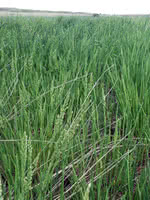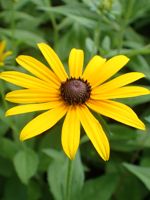Mon-Fri 9am - 5pm Mountain time
Slough Grass vs Black-Eyed Susan
Beckmannia syzigachne
Rudbeckia hirta
CUSTOM GROW
NOT AVAILABLE THIS SEASON - MIGHT RETURN
Slough Grass is a hardy grass that will happily grow in any wet soil. It is usually found near water and is common haymaking material or forage.
Slough Grass is also useful for erosion control and land reclamation.
Black-Eyed Susan is a striking native wildflower known for its bright yellow, daisy-like flowers with dark center disks. With deadheading, the plant can bloom for an extended period, from mid-summer to early fall. These cheerful flowers attract a variety of pollinators, including bees and butterflies. Adding to its ecological value, the plant also acts as a host for the Wavy-Lined Emerald Moth (Synchlora aerata) and the Silvery Checkerspot (Chlosyne nycteis) butterfly.
While it is typically a short-lived perennial or biennial, the plant freely self-seeds. This allows it to persist in the landscape, particularly in natural areas where it can spread and establish itself. This plant is drought-tolerant, salt-tolerant, and deer and rabbit-resistant, making it ideal for challenging environments. The Black-Eyed Susan is well suited to wildflower gardens, pollinator gardens, as well as slopes, banks, and naturalized areas.

